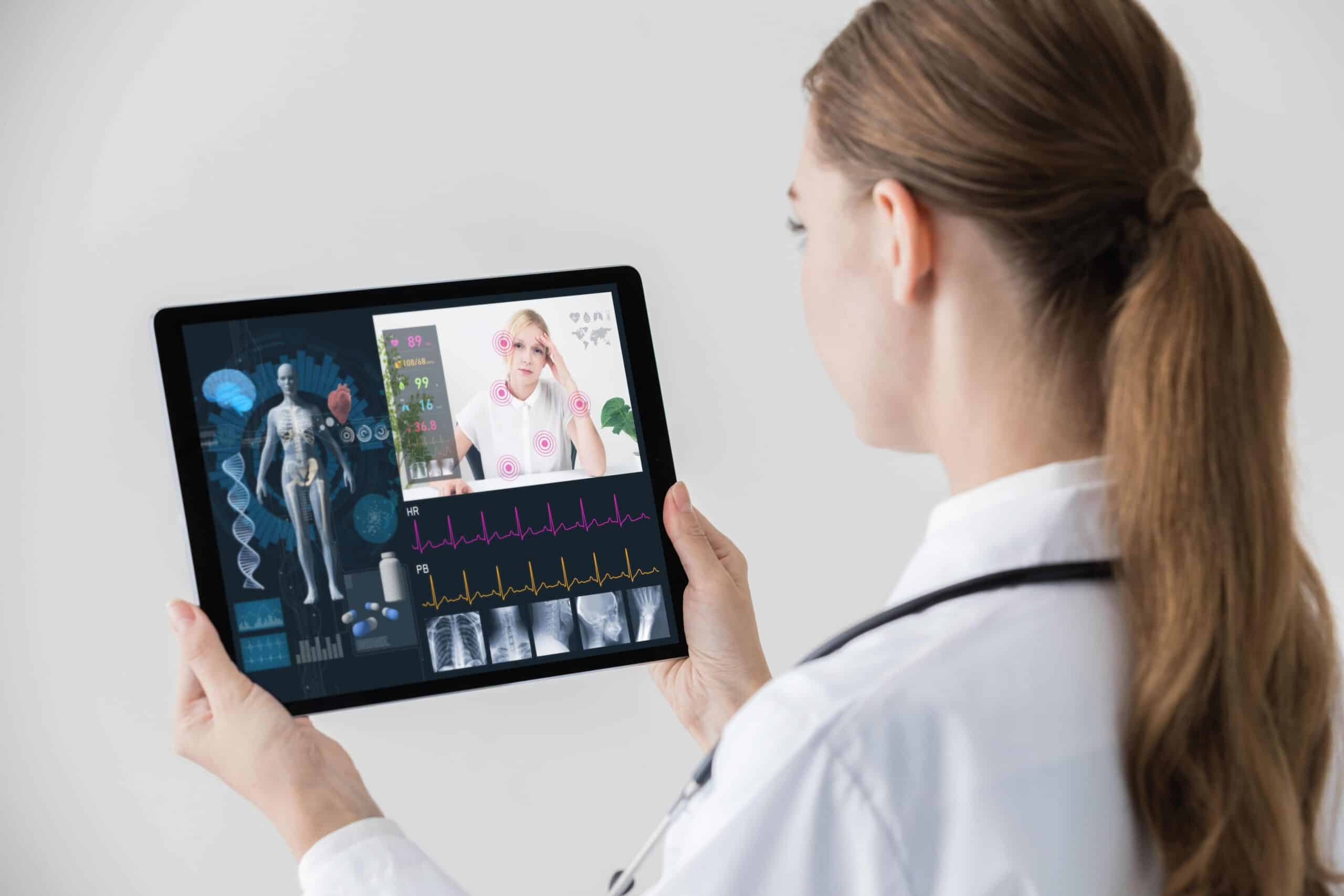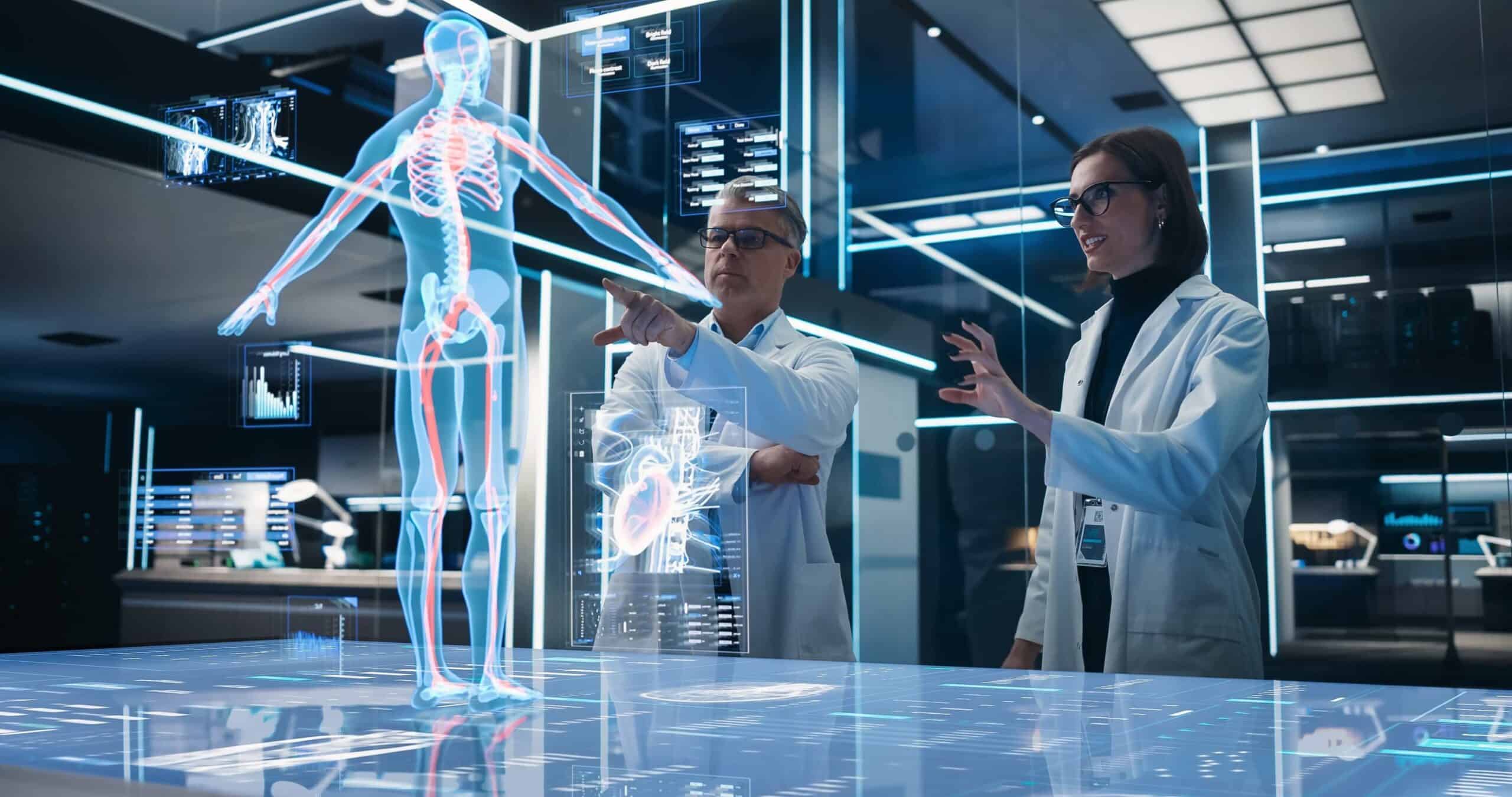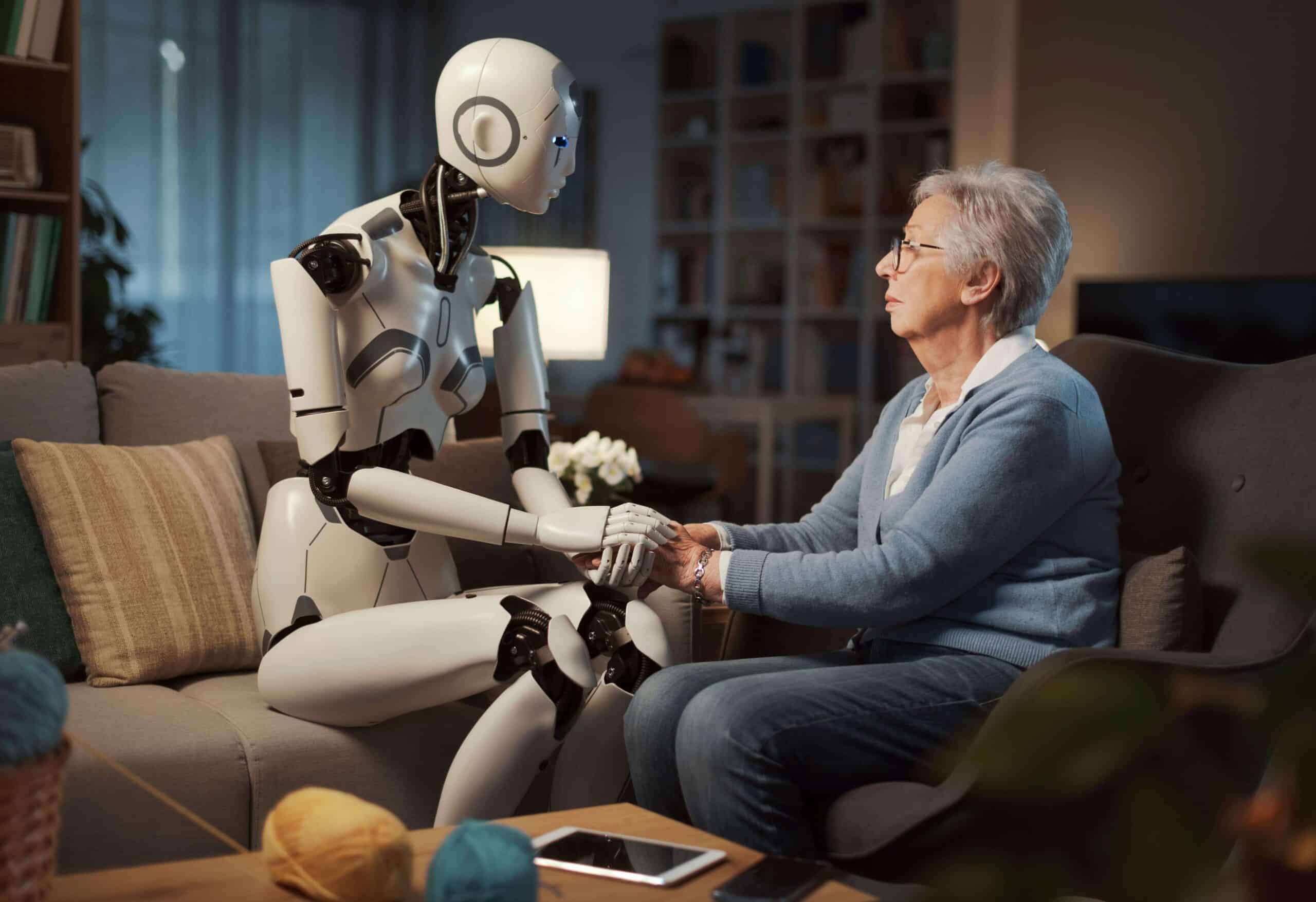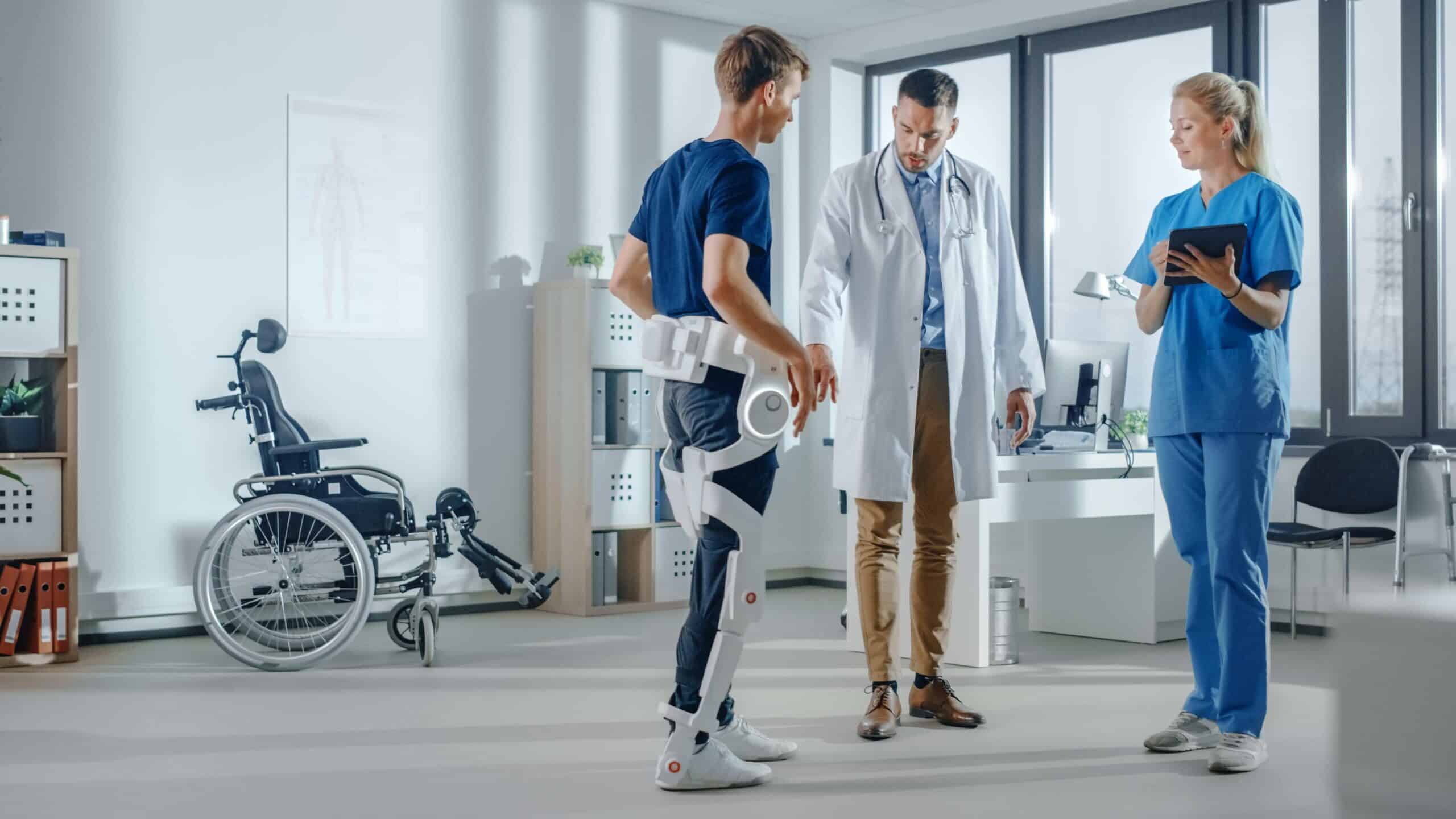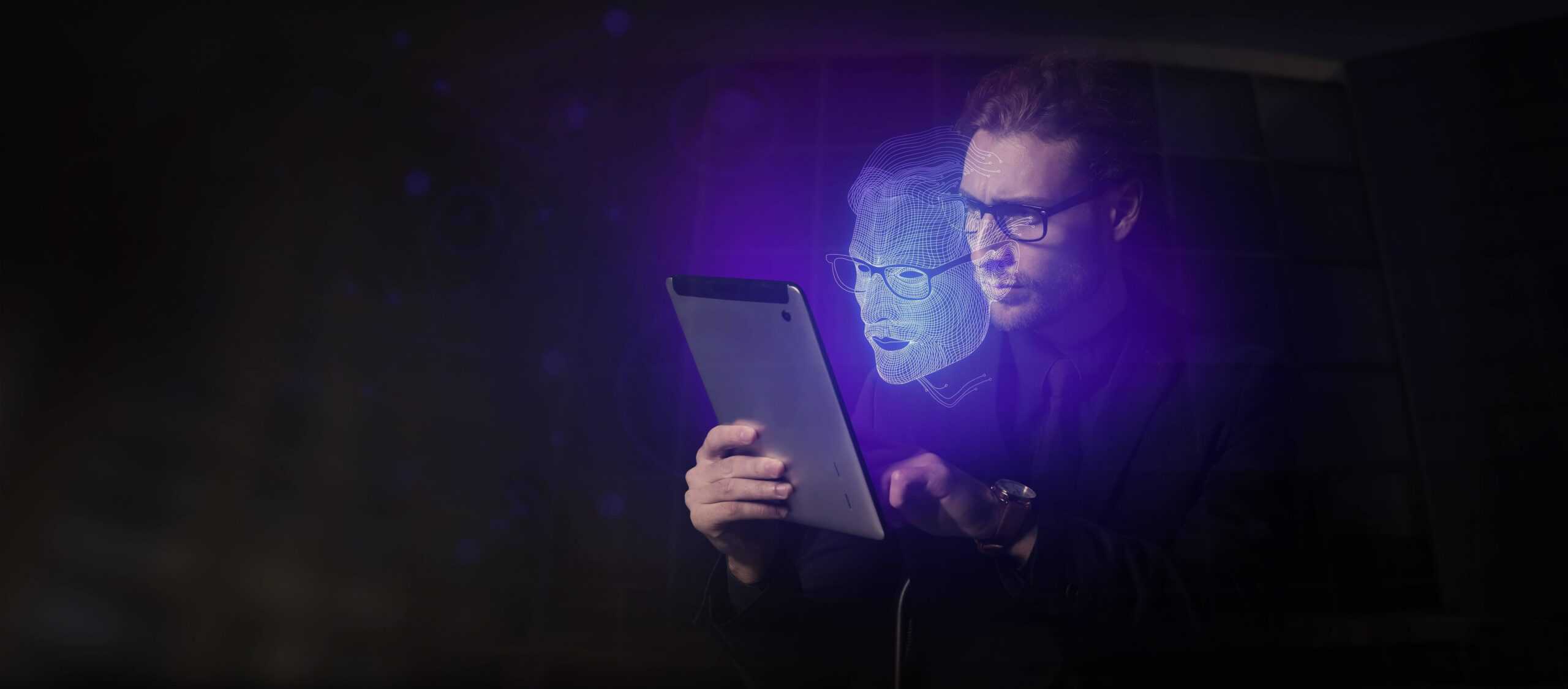- A Japanese cafe features robot waiters controlled by paralysed people
- Xfinity X1 allows paralysed people to control their TVs with simple eye movements
- Researchers from Carnegie Mellon developed the world’s first non-invasive mind-controlled robotic arm
- A robot arm helps wheelchair users pick up a drink, open a door, or put on their makeup
- Can tech make life easier for paralysed people?
Being able to walk, see, and hear is something most of us take for granted, without giving it a second thought. However, not everyone has that luxury. In fact, according to the World Health Organization (WHO), more than a billion people worldwide, or 15 per cent of the global population, are affected by some form of disability. This often severely affects their ability to function and prevents them from enjoying everything the world has to offer. That’s particularly true for people with paralysis, whose condition makes it difficult, and sometimes even impossible, to take part in regular daily activities. The Reeve Foundation estimates that there are approximately 5.4 million paralysed people in the United States alone.
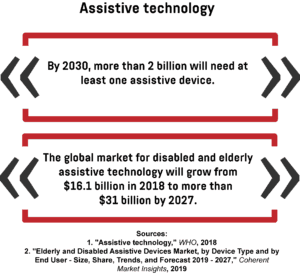
Assistive devices and technologies are designed to help disabled people reduce their dependence on others, become more productive members of society, and improve their quality of life. These include wheelchairs, prostheses, hearing aids, visual aids, and many others. With an aging global population and a rise in noncommunicable diseases, the WHO estimates that the number of people who require at least one assistive device will continue to increase and could exceed 2 billion by 2030. This in turn is expected to fuel the growth of the assistive devices market over the coming period. According to a recent report published by Coherent Market Insights, the global disabled and elderly assistive technology market was valued at $16.1 billion in 2018 and is predicted to surpass $31 billion by 2027.
A Japanese cafe features robot waiters controlled by paralysed people
A new pop-up cafe called Dawn ver.β was recently opened in Tokyo, Japan. However, it’s not an ordinary cafe. What makes it unique is that it’s staffed entirely with robot waiters controlled by people with paralysis. A product of a collaboration between the Japanese robotics startup Ory, the non-profit organisation Nippon Foundation, and All Nippon Airways, Dawn ver.β is modeled to look like a cafe from a popular anime called Time of Eve, which depicts a future society in which androids live alongside humans.
Developed by Ory, a Japanese startup that specialises in the development of robotics for people with disabilities, the OriHime-D robots are 120 cm tall, weigh 20 kg, and can be controlled through a computer from a remote location. The robots are also equipped with cameras and speakers to allow remote operators to see and hear everything they do. During its limited, two-week-long test run in 2018, the cafe employed ten paralysed people affected by conditions such as ALS and spinal cord injuries, who were able to instruct the robots to move, look around, handle objects, and communicate with customers by simply moving their eyes. The people were paid 1,000 yen, or $8.80 per hour, which is a standard wage for part-time work in Japan.
However, the project wasn’t about money at all, but about demonstrating how robotic technology can give paralysed people a certain degree of independence and enable them to rejoin the workforce, something they wouldn’t be able to do otherwise. “I want to create a world in which people who can’t move their bodies can work too,” says Kentaro Yoshifuji, the CEO of Ory. While Dawn ver.β closed shortly after it was opened, the company hopes it will be able to open a permanent version sometime in 2020.
Xfinity X1 allows paralysed people to control their TVs with simple eye movements
Can you imagine not even being able to change channels on your TV? That’s just one of the things paralysed people have to deal with on a daily basis. That may be about to change, though. The US telecommunications giant Comcast recently launched a new feature called Xfinity X1, which allows people with physical disabilities to control their television sets using nothing more than their eyes.
Xfinity X1 eye control is a web-based remote that pairs seamlessly with existing eye gaze hardware and software, Sip-and-Puff switches, and other assistive technologies, allowing users to perform a number of actions by simply gazing at a corresponding button on the screen. Among other things, X1 users will be able to change the channel, bring up the guide, search for content, set a recording, type out voice commands, or launch the X1 Sports App, which displays sports scores and statistics in real time.
“Changing the channel on a TV is something most of us take for granted but until now, it was a near-impossible task for millions of viewers,” says Tom Wlodkowski, the vice president of accessibility at Comcast. “When you make a product more inclusive you create a better experience for everyone and we’re hoping our new X1 feature makes a real difference in the lives of our customers.” However, Comcast doesn’t plan to stop at television. The ultimate goal is to integrate eye-tracking technology into its smart home services, which would enable customers to use their eyes to control every smart device in their home, including the lights, thermostat, and doors.
Researchers from Carnegie Mellon developed the world’s first non-invasive mind-controlled robotic arm
The idea of controlling robotic devices with just our mind has been around for quite some time. Eventually, we were even able to make it a reality, thanks to advancements in the development of brain-computer interfaces (BCIs). However, every successful application of the idea so far required the use of invasive brain implants, which were not only expensive, but also potentially risky for the user. For years, researchers have been working on developing non-invasive brain-computer interfaces, but these proved to be far less precise than their invasive counterparts and resulted in jerky movements of the robotic limbs, significantly limiting their usefulness. Until now.
A team of researchers from Carnegie Mellon University recently announced that they’ve developed the world’s first non-invasive mind-controlled robotic arm capable of producing smooth, continuous motion that could previously be achieved only with invasive brain implants. To make this possible, the researchers used a combination of innovative sensing and machine learning techniques to create a brain-computer interface that can access signals deep within the brain of a person wearing an EEG headcap. “Despite technical challenges using noninvasive signals, we are fully committed to bringing this safe and economic technology to people who can benefit from it,” says Bin He, the department head and professor of biomedical engineering at Carnegie Mellon University. “This work represents an important step in noninvasive brain-computer interfaces, a technology which someday may become a pervasive assistive technology aiding everyone, like smartphones.”
A robot arm helps wheelchair users pick up a drink, open a door, or put on their makeup
The Canadian tech company Kinova Robotics has developed a robotic arm that allows wheelchair users to perform a variety of everyday tasks. The Jaco arm, as the device is called, is a lightweight robotic arm made of carbon fibre that can be attached to any powered wheelchair available on the market, providing users with three fingers and six degrees of freedom. Once plugged into the wheelchair’s battery source, the arm can be controlled through its existing control mechanism, whether it’s a joystick, a sip-and-puff, or something else, making it intuitive and simple to use.
“It allows people to do things in their daily lives which seem quite simple to many of us, such as being able to pick up a drink, open a door, even put on their makeup,” says Sarah Woolverton, the head of marketing and communication at Kinova. “Previously these are all things a lot of our users were not able to do on their own. It really gives a degree of independence. We’ve heard tremendous stories about what people manage to achieve in just a few days of starting to use the arm. They feel so proud of themselves. It’s quite inspiring!” At this time, the biggest issue with the Jaco arm is its price, which stands at $35,000, drastically limiting its accessibility in countries where such devices aren’t covered by medical insurance. While the company is working on a cheaper, more affordable version of the arm, it will have to come at the expense of functionality, meaning reduced payload and speed.
Overall, affordability remains the biggest obstacle when it comes to assistive devices and technologies in general. According to the WHO, only 1 in 10 people in the world who need assistive devices actually have access to them. “These are all really exciting initiatives that will make a huge difference to some people,” says Anna Lawson, the director of the Center for Disability Studies at Leeds University in the United Kingdom. “But they are very expensive … they’re not going to be available to the vast majority of disabled people.”
Can tech make life easier for paralysed people?
Over the years, it has been demonstrated numerous times that technology can make our lives easier and more convenient in various ways. And since it’s probably safe to say that there are few among us who require assistance more than those who have been paralysed, why shouldn’t they be able to enjoy the benefits technology brings as well? People with paralysis have serious difficulties in functioning and are often completely dependent on others for even the most basic of tasks. Thankfully, technology has the power to change that.
In recent years, a number of innovative technological solutions have appeared that can significantly improve the quality of life for people with paralysis. From robot waiters that can be controlled remotely with simple eye movements to mind-controlled robotic arms, these inventions are changing the way paralysed people are going about their daily lives, restoring a certain degree of independence and allowing them to become more productive members of society.


